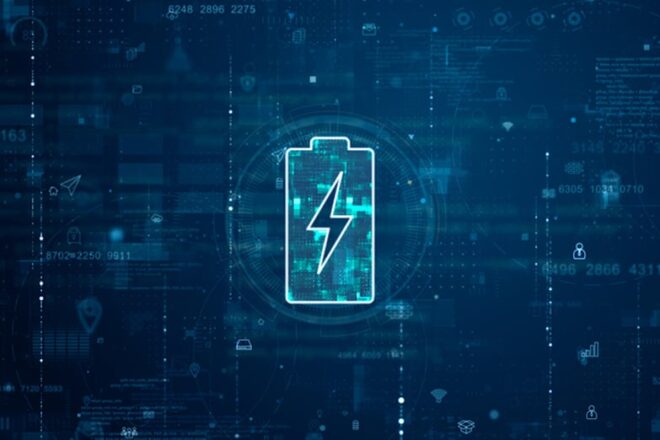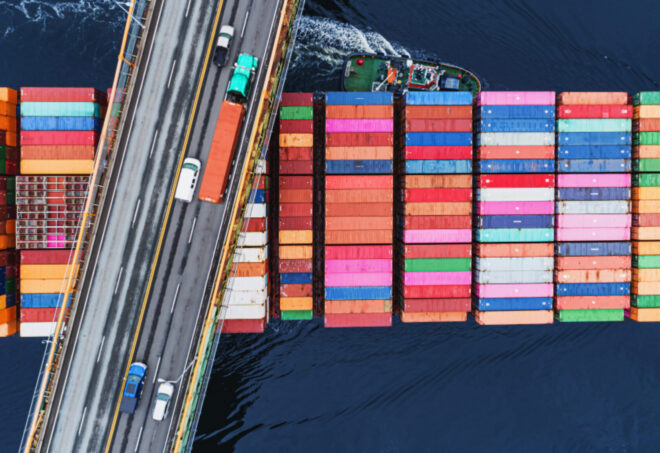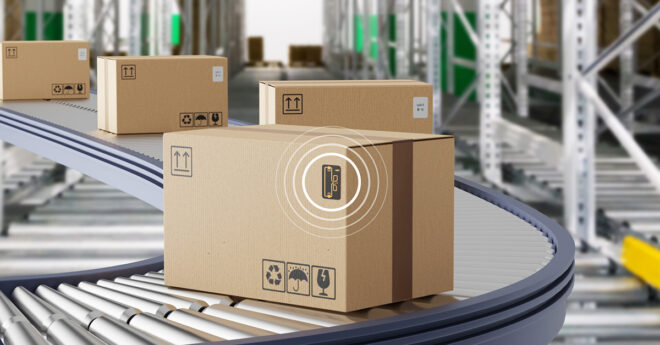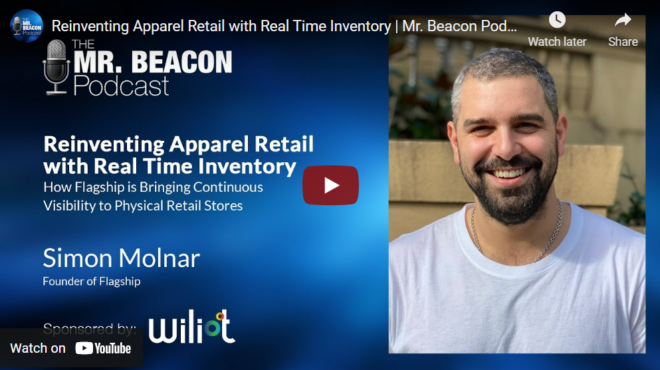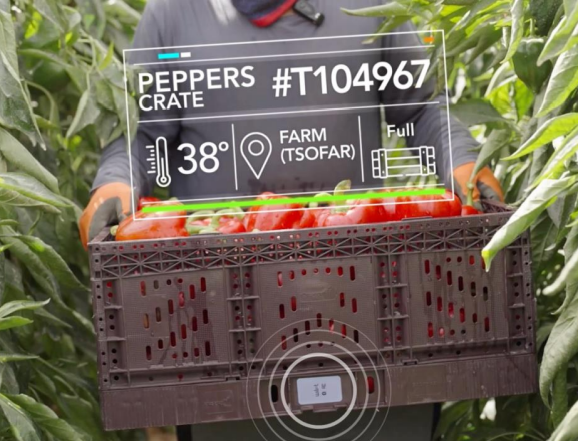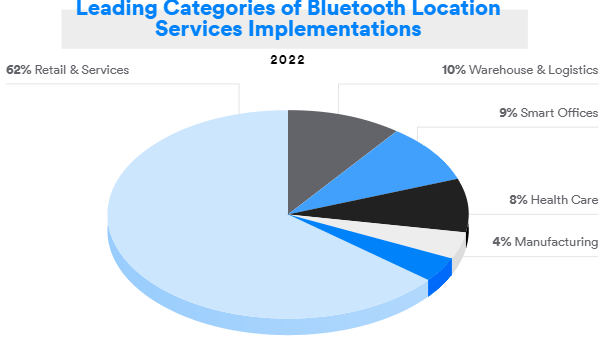If you recall from the previous article in this series, we covered the application of indoor navigation. We also covered location services in general and categorized them into two categories:
- Proximity Solutions: These solutions are the simpler of the two and they leverage one or more technologies to determine the location of two devices relative to each other
- Positioning Systems: These are used to determine the physical location of devices and involve more sophisticated infrastructure deployments
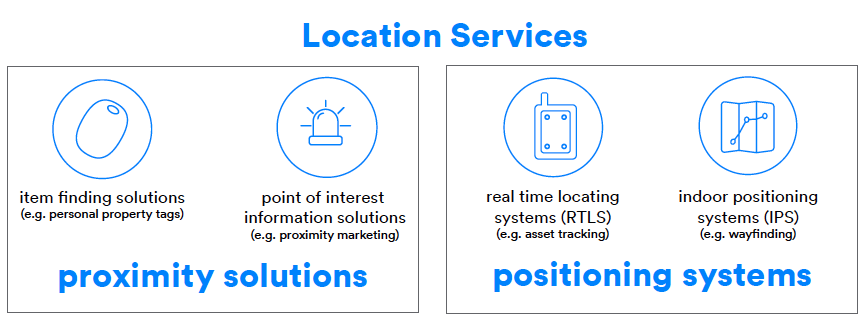
Proximity solutions could be further categorized into two types (shown on the left-hand side of the diagram above):
- Item Finding Solutions: An example of item finding solutions is item finding tags that are attached to keychains, luggage, remote controls, and other personal items for the purpose of tracking and locating these devices when they are misplaced or lost
- Point of Interest Information Systems: These include the application of displaying relevant information to the user on their smartphone when they are near a specific device in a fixed location. For example, while a user is navigating a shopping center, they could be notified when approaching an item that’s on sale from within the shopping center’s mobile app.
Positioning systems could be further categorized into two types (shown on the right-hand side of the diagram above):
- Real-Time Locating Systems (RTLS): Used for both asset tracking as well as people tracking within a facility. RTLS solutions are network-centric systems where the locations are tracked and reported to a backend server that provides this information to users. Usually, the devices themselves are not aware of their locations. For example, these solutions can locate and track the position of pallets, forklifts, and workers in a warehouse, or ultrasound machines and patients in a hospital, helping to ensure safety and optimize response time in an emergency.
- Indoor Positioning Systems (IPS): IPS solutions work in the opposite way of RTLS solutions – they are device-centric, where the devices are aware of their locations and report the positioning to the users of the devices (usually via a smartphone app). Some examples of indoor positioning systems include indoor navigation in airports, museums, shopping malls, theme parks, healthcare facilities, conference centers, and more.
What is Asset Tracking?
Asset tracking is probably the most popular application of Real-Time Locating Systems. It is very similar to indoor navigation/wayfinding except that the interest is in tracking the moving objects, so it’s a network-centric application (i.e., the objects are tracked by the system, and the objects are usually not aware of their location). The technologies utilized in both applications are also similar and often times identical.
The goal of asset tracking is to track different physical assets and their locations within a facility or contained area for various purposes, including:
- Improvement of asset utilization (e.g., tracking usage and locating equipment and tools)
- Tracking of assets in logistics (e.g., inventory and shipment tracking)
- Analysis of consumer behavior in a commercial setting (e.g., tracking shopper behavior in supermarkets)
- Tracking of assets in a production facility (e.g., tracking of assets in a manufacturing pipeline)
The data collected in the process of asset tracking is used to support decision making, prevent losses, and maximize asset utilization metrics. In the end, the ultimate goal is to save time and costs of business operations.
An asset tracking system usually consists of two main types of devices:
- Stationary locator devices that are installed within the facility
- Tracking tags that are mounted on the assets or worn by the individuals being tracked
A backend software, often referred to as the location engine, is also usually involved and is the main part of the system that performs the actual location calculations. It is also utilized for other purposes, such as managing the locator devices, reporting the locations of the different assets, and providing an interface to users for performing data analysis operations on the tracking metrics.
Assets being tracked within an organization are usually categorized into two main categories:
- Inventory Items: These are assets that a business may never see again and usually have a short tracking lifetime, such as items that a company sells and needs to ship to distributors or to consumers
- Owned Assets: These are assets that a business owns and are expected to be tracked for as long as they are usable, such as tools and equipment used by employees in a facility
There are a few differences between these two types, which affect the level of tracking implemented. For example, owned assets are usually tracked by unique serial numbers for each item, whereas inventory items are usually tracked by part number and quantity since items are generally interchangeable.
Whereas asset tracking has been traditionally accomplished in a manual fashion (which incurred significant labor costs), recent advancements in technology (computers, software, and wireless technologies) have enabled much more efficient automated solutions.
Examples of applications of asset tracking include:
- At construction sites for tracking equipment and enhancing utilization
- In manufacturing facilities for tracking the efficiency of production lines
- In medical facilities such as tracking medical equipment in a healthcare facility
- In warehouses for logistics tracking such as inventory and shipments
- In educational institutes and facilities for tracking expensive equipment and preventing loss and theft
What Are the Benefits of Asset Tracking?
Asset tracking has many benefits for a business. Some of the most important ones are:
- Lower operational costs
- Efficient utilization of tools and equipment
- Optimization of space and facility utilization
- Prevention of loss and theft of important assets
- Automated management of inventory and shipments
The Most Critical Attributes for Wireless Technologies Utilized in Asset Tracking
There are a few key attributes that need to be considered in wireless technologies utilized for asset tracking applications. These are:
- Scalability
- Positioning resolution (accuracy and latency)
- Power consumption (for the asset tags being tracked)
- Cost (cost of device, cost of deployment, maintenance, etc.)
The level of tolerance for each of these attributes depends heavily on the application in question. For example, for some applications, knowing whether an asset is present in a specific room is enough, while for other applications, the location accuracy may need to be down to the sub-meter or centimeter level.
The level of accuracy needed also directly impacts the cost involved with deploying and implementing an asset tracking system. Generally speaking, the more accurate the system needs to be, the higher the cost involved.
![]()
FEATURED INFOGRAPHIC
Bluetooth Location Services
See 8 use cases for enhancing building efficiencies and creating a better visitor experience, discover new data that supports the latest trends and forecasts, and find out what’s driving the rapid adoption of location services solutions.
Comparison of the Wireless Technologies Most Suitable for Asset Tracking
As we mentioned earlier, asset tracking applications are very similar to indoor navigation applications, so the most suitable wireless technologies are also similar:
- Bluetooth® Low Energy
- Ultra-wideband (UWB)
- LPWAN (LoRa, LTE-M, NB-IoT)
- RFID (active)
One other solution that is not specifically IoT-related but still worth mentioning (and is a popular alternative technology) is the use of Computer Vision for tracking objects and people. Computer vision refers to the implementation of algorithms and techniques that allow computers to recognize people and objects in digital images. With the recent advancements of computer vision techniques, it has become possible to recognize and track assets in real time using camera systems. The main disadvantage of computer vision systems is the extremely large bandwidth required for analysis of the video/images and their content, especially when performed in real time.
Bluetooth Low Energy
Bluetooth® Low Energy is one of the most popular wireless technologies used in asset tracking applications. Some of the most important benefits of using Bluetooth Low Energy in asset tracking applications include:
- Low power consumption
- Low cost
- Support for large-scale deployments
Some of the disadvantages of Bluetooth Low Energy solutions include potential interference from other signals in the same frequency spectrum and medium-level accuracy in systems that rely on RSSI.
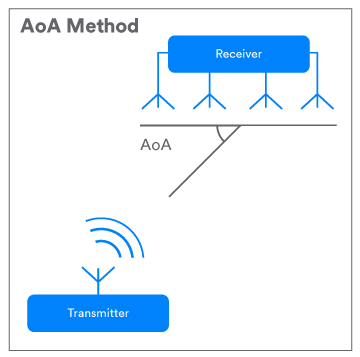
Bluetooth beacons are commonly used in asset tracking systems. The implementation involves installing locator devices in specific areas within a facility that receives signals transmitted by tags attached to the different assets (which operate as Bluetooth beacons). The Received Signal Strength Indicator (RSSI) of the packet sent by the beacon to each locator within range is reported to a backend server. The backend server is aware of all locator devices and can utilize the RSSI information to determine an approximate location of the Bluetooth beacon (asset tag) within the facility.
In 2019, a new exciting feature called Bluetooth® Direction Finding was introduced in version 5.1 of the Bluetooth standard specification. This new feature allows Bluetooth Low Energy devices to dramatically increase the accuracy of the location of Bluetooth devices based on either the angle of departure (AoD), the angle of arrival (AoA), or both.
For the case of asset tracking, AoA is the more suitable technique utilized. In this case, multiple locator devices (receivers) are installed in a facility. Each locator has an antenna array that is used to determine the Angle-of-Arrival of the signals received from the Bluetooth beacons (asset tags) which employ a single antenna. The RSSI, along with the AoA information, is then utilized to determine a more precise positioning of the beacons. The locations of the assets are then usually reported to the users of the asset tracking system via a web interface (via a backend server).
Ultra-Wideband (UWB)
Ultra-Wideband is a short-range radio technology that’s popular in indoor navigation and asset tracking systems. UWB operates in the frequency range of 3.1 and 10.6 GHz and has a bandwidth of at least 500 MHz.
Asset tracking systems that are UWB-based differ from Bluetooth® Low Energy beacon solutions in that they utilize Time-of-Flight instead of RSSI or direction finding (AoA, AoD) measurements that are then used in trilateration calculations to determine device location.
The basic principle behind the time-of-flight method is the ability to calculate the distance from one device to another by knowing both (1) the time it took for the signal to propagate from the transmitter to the receiver and (2) the signal velocity. Finally, these values are utilized in a trilateration calculation to figure out the position of the target device.
A couple of the benefits of UWB asset tracking systems:
- Higher accuracy than RSSI-based techniques used in other technologies since they operate in a very broad band of frequencies – measuring the time-of-flight of any radio signal is correlated with its bandwidth
- Reduced interference with other signals due to:
- Operating in a different frequency spectrum
- Low transmit power
- Short transmit duration of a UWB signal
Some of the disadvantages of UWB technology, when utilized for asset tracking implementations, include:
- High cost, sometimes even prohibitive
- The lack of global standardization – regulations differ across different regions of the world
LPWAN Technologies (LoRa, LTE-M, NB-IoT)
LPWAN technologies have recently become more popular in the area of asset tracking applications, especially when long-range tracking is needed. LPWAN-based solutions usually utilize assisted GPS (A-GPS) for determining location. However, this methodology is limited indoors, and so solutions in this case utilize triangulation using RSSI or Time-of-Flight (ToF) instead for determining location.
Due to the high latency of LPWAN technologies, these solutions are usually limited to tracking devices with limited movements instead of more mobile devices. Latency is also directly correlated to accuracy in location calculation, so these solutions usually do not offer accurate enough positioning calculations.
RFID
The last potential wireless technology for asset tracking systems we’d like to discuss is Radio Frequency Identification (RFID). RFID-based asset tracking systems usually use RSSI measurements to determine location.
There are two types of RFID tags: Passive and Active. Asset tracking systems usually utilize active RFID tags instead of passive tags since they have a higher range of operation.
Some of the drawbacks of RFID-based asset tracking systems include:
- High cost of active RFID tags
- The need for many tags to provide accurate positioning
- Low accuracy in some cases
Now, let’s compare the most common technologies in terms of the key attributes we listed:
![]()
Further Discussion
One important aspect to keep in mind is that most asset tracking systems will utilize multiple technologies, each for a different purpose. For example, Wi-Fi can be used for data transfer between the different locators deployed within the facility and the backend server(s), while technologies like Bluetooth® Low Energy and UWB are most commonly used for determining the locations of target devices within an area.
The most important attribute considered in the choice of technologies used in asset tracking is location accuracy. In general, the higher the accuracy, the higher the cost and the more complex the system. This highly affects the choice of technologies being used in an asset tracking system. One important note is that with the addition of direction finding capabilities, Bluetooth technology is able to achieve high accuracy at a lower cost than the other options, especially when considering the total cost of ownership.
Some asset tracking systems may also be utilized for gathering sensor data at the device end. This is accomplished by incorporating sensors in the asset tags that are attached to the devices being tracked. In this case, latency plays a crucial role in the feasibility of the technologies being used.
![]()

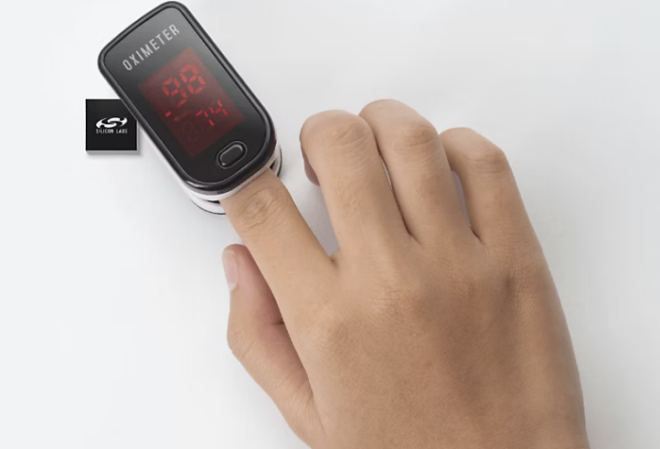


![ABI Growth Chart.png 815076338[1]](https://www.bluetooth.com/wp-content/uploads/2024/03/ABI_Growth_Chart.png_8150763381-660x384.png)
